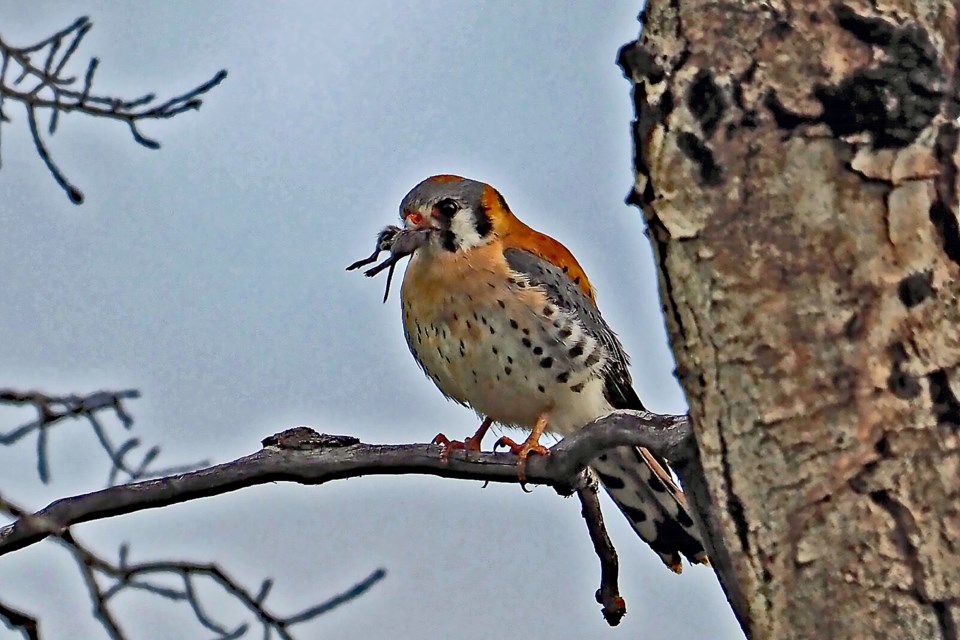KANANASKIS COUNTRY – With their eyes sharp and their ears sharper, birders look for their next feathered friend to index.
Counting all that sings, squawks and quacks, the volunteer-run BowKan Birders logged 2,377 birds and 119 species in this year’s spring count.
A highlight this year for birders was spotting a lone turkey vulture, which had been officially spotted and counted last year for the first time in 32 years during the spring count.
“It seems like turkey vultures are tending to move in,” said Cliff Hansen, organizer of the BowKan Birders. “Normally they nest out on the prairie and the east side of Alberta, but there’s one around here right now.”
Like the Christmas Bird Count, the spring counts are performed in predetermined areas on the last weekend of May. BowKan’s 25-kilometre circle centres itself on the north face of Mount McGillivray, stretching near Nakiska ski hill and touching Canmore’s Christmas count circle in the west.
“Quite a bit farther north [there are] areas that we can’t even access because it’s all mountainous,” said Hansen.
Counted this year were 205 yellow-rumped warblers and 235 chipping sparrows were spotted this year which is nearly double the average for those two species.
Like the turkey vulture, a spotted towhee, plumbeous vireo, Nashville warbler and a blackburnian warbler were officially recorded for the second time during the count.
Last year, BowKan pencilled in 104 species and 1,303 individual birds, which was below its 32 count average of 2,618 birds.
“The data from a single count really doesn’t mean too much. You have to add it to the counts of all the others in Alberta and British Columbia, North America, and put them together,” said Hansen.
Birds aren’t the only stars of the show as BowKan also collects data on flowering plants and mammals, such as black and grizzly bears. This year, only one black bear was spotted among dozens of other nut and grass-eating mammals.
“I normally have a dog and the dog went and found a black bear, and the black bear chased the dog. The dog hid behind me and the bear brushed my legs as it fled by,” said Hansen.
BowKan has been indexing birds since 1992, and the spring count as a whole has been running since 1976 in Alberta. The spring count averages 15 to 20 locations a year in Alberta collecting data, from the southernmost areas up to Fort McMurray. BowKan birders are the only spring count in the Bow Valley as Banff National Park hasn’t counted since 2017.
The University of Calgary’s Briana Van Den Bussche, who’s new to birding, found solace in using an app called Merlin Bird ID, which uses a phone’s microphone to help identify what birds are singing their songs.
“Me and my co-worker, who were doing the bird count, are both kind of new to birding, but we found it to be an education tool,” said Van Den Bussche, who works with the Biogeoscience Institute at the Barrier Lake field station.
“It wasn’t like we just were recording the sounds, and the app was doing all of it. It was like as soon as we identified the call, then we would hear it and be able to confidently say, ‘oh, I know that that’s a ruby-crowned kinglet.’”
Hansen is more of an expert and employs the use of the app as his “ears aren’t as good as they used to be.”
How bird count data is used
BowKan’s data not only contributes to the full data set collected by Nature Alberta, but it can also help with education.
“People are welcome to use that in whatever way they want, in a classroom or for their own personal interest, to see trends,” said Van Den Bussche.
In 2019, the University of Calgary’s Barrier Lake field station officially became the host of BowKan’s data. This has allowed them to post the data from the winter and spring counts on its website for anyone to use.
“We’ve had a long-standing relationship since before I was working here with the BowKan bird count, where they were doing the counts around the field station and other people that have worked here throughout the years had been involved in the count,” said Bussche.
Bussche said that students from junior high to undergraduates and teachers have been using the data to look at the trends between birds and weather.
“It’s also just a way for people to interact with the scientific data that’s collected and practice using it and understanding it and interpreting it,” said Bussche.




